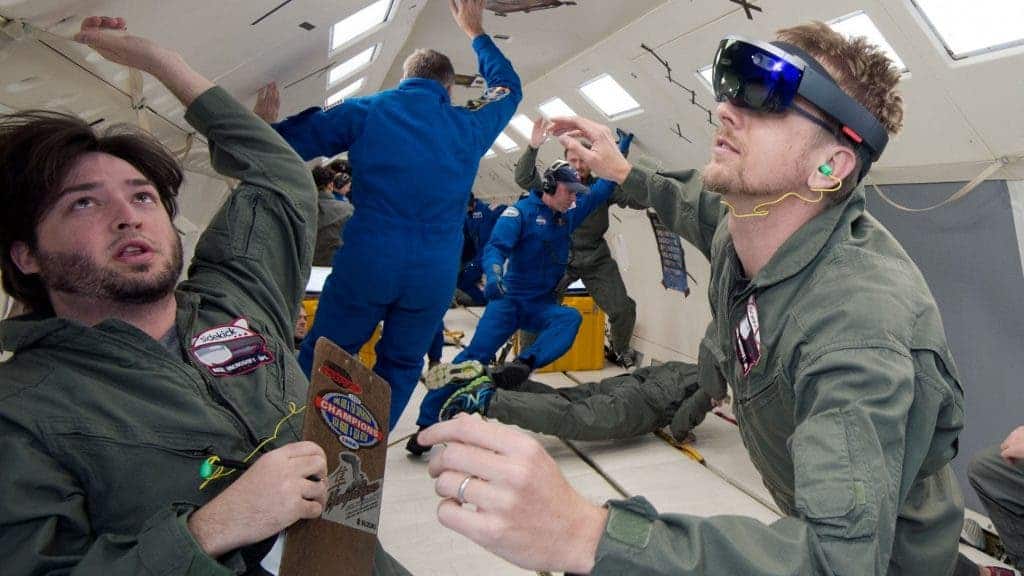This weekend, SpaceX is scheduled to deliver cargo and other much needed supplies to the International Space Station via its Dragon capsule. Among the supplies is a surprise for the astronauts on board: the latest high tech gadget from Microsoft, the HoloLens. If you missed ZME Science’s feature of the HoloLens, well you’re in for a treat if this is the first time you hear about it. Basically, the tech involves using holographic computing which enables you to mix virtual reality with ..actual reality. Holograms following in your kitchen, weather reports on your coffee cup. Really, anything is possible with the HoloLens, let alone in the final frontier: space.

Microsoft’s HoloLens has been modified per NASA’s specifications under a project called “Sidekick.” As the name suggests, the virtual reality goggles and systems will help the astronauts perform better on their missions and, most importantly, improve their training.
“HoloLens and other virtual and mixed reality devices are cutting edge technologies that could help drive future exploration and provide new capabilities to the men and women conducting critical science on the International Space Station,” NASA’s Sam Scimemi said in a statement. “This new technology could also empower future explorers requiring greater autonomy on the journey to Mars.”
Sidekick works in two modes: Remote Expert Mode and Procedure Mode. In the first mode, an expert on Earth is connected with the astronaut via Skype. The on ground specialist can guide the astronauts with procedures, draw pictures that show in the astronaut’s interface, play animations and so on. In Procedure Mode, astronauts can use holographic animations over the real-time viewing to help them get up to speed with their tasks. Scenario: an astronaut is in space tasked with repairing a satellite or telescope. The astronaut activates his Sidekick and is then shown animations or static graphics with the arrangement of the defective parts, how these work or what needs to replaced – all in real time superimposed over the real deal. This is possible with HoloLens, although not quite yet.
For now, this set of Sidekicks delivered to the ISS over the weekend will only work in Procedure Mode with limited capabilities. Just to get the astronauts familiar with the gear’s capabilities. At another unspecified date in the future, a second set of the Sidekicks will arrive on the station to test the network functionality of the Remote Expert Mode.
That’s not all. Microsoft is working NASA on another project called “OnSight” which will use similar holographic computing technology to virtually visit Mars. Astronauts can step in the shoes, sort to speak, of a Martian rover and effectively borrow its eyes and ears. Yes, astronauts can technically visit the Red Planet without even having to set foot on it. Amazing!






